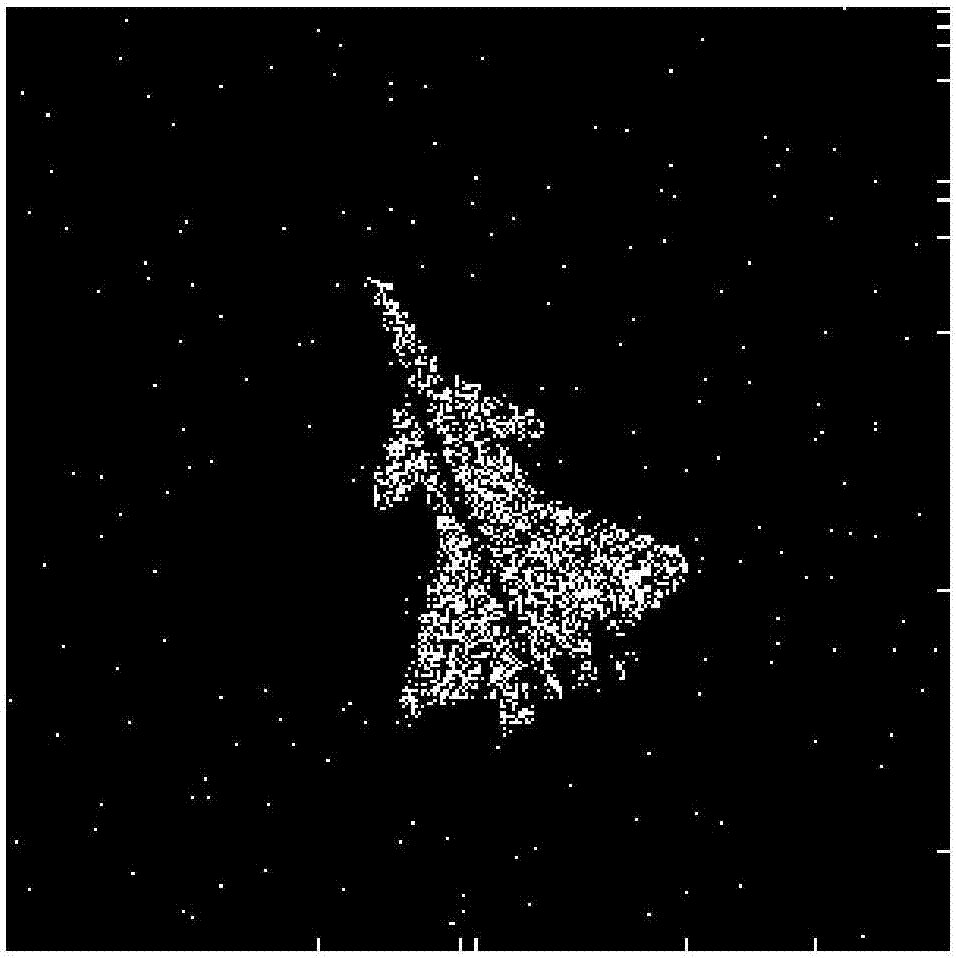Image segmentation method based on pseudo-color coding and DISCOV coding
A technology of pseudo-color coding and image segmentation, which is applied in the field of image segmentation based on pseudo-color coding and DISCOV coding, can solve the problems of slow calculation speed and low accuracy rate, achieve good segmentation effect, improve accuracy rate and calculation speed, and improve The effect of information
- Summary
- Abstract
- Description
- Claims
- Application Information
AI Technical Summary
Problems solved by technology
Method used
Image
Examples
specific Embodiment approach 1
[0033] Specific implementation mode one: combine image 3 Describe this embodiment, the specific process of the image segmentation method based on pseudo-color coding and DISCOV coding of this embodiment is:
[0034] Step 1. The simulation environment used in the present invention is the multi-angle aircraft data provided by the website https: / / github.com / kishankondaveeti / Synthetic_ISAR_images_of_aircrafts open source. The specific data used are 'a1_img026.mat', 'a5_img019.mat', 'a6_img087.mat'. Grayscale the data as input data; such as Figure 1a ;
[0035] Obtain image data, perform grayscale processing on the image data, obtain a grayscale processed image, add noise processing to the grayscale processed image, and obtain a noise-added image; as Figure 1b ;
[0036] The added noise satisfies the following conditions: the ratio of the signal power of the image to the power of the noise is 4;
[0037] Step 2, removing outliers from the noise-added image obtained in step ...
specific Embodiment approach 2
[0045] Specific embodiment 2: The difference between this embodiment and specific embodiment 1 is that in the step 3, pseudo-color coding is performed on the image after removing abnormal values to obtain a pseudo-color coded image; the specific process is:
[0046] Pseudo-color is a technique that replaces the gray value of pixels with color. It maps a monochrome image into a color image by matching each gray level to a point in the color space. Its mapping relationship can be expressed by the following formula:
[0047] The pseudo-color encoding based on the transformation of the pixel itself maps the grayscale image of the image after removing outliers to an RGB image, and the mapping relationship is:
[0048]
[0049] In the formula, f(x, y) represents the pixel gray value of point (x, y) in the image; T R ,T G ,T BIt is the mapping function between red, green, blue and gray respectively, which reflects the mapping relationship of pixels from gray to color. There ...
specific Embodiment approach 3
[0055] Embodiment 3: The difference between this embodiment and Embodiment 1 or 2 is that in the step 4, the pseudo-color-coded images R, G, and B are sent to DISCOV, and the pseudo-color-coded images are coded by single opposite elements. RG encoding; the specific process is:
[0056] The coding formula of a single opposite component is:
[0057] After encoding the grayscale image in pseudo-color, we have obtained rich color information that conforms to the human visual model. The method proposed in this paper can fully utilize and encode the color information to achieve further image understanding and cognition.
[0058] The DISCOV dimensionless shunt model converts RGB image elements into a model consisting of retinal, single-opposite element, and double-opposite element feature cascades, transforming the input into a computer-cognizable system.
[0059] Users can specifically establish a dimensionless shunt model based on the multi-channel information around the target an...
PUM
 Login to View More
Login to View More Abstract
Description
Claims
Application Information
 Login to View More
Login to View More - R&D
- Intellectual Property
- Life Sciences
- Materials
- Tech Scout
- Unparalleled Data Quality
- Higher Quality Content
- 60% Fewer Hallucinations
Browse by: Latest US Patents, China's latest patents, Technical Efficacy Thesaurus, Application Domain, Technology Topic, Popular Technical Reports.
© 2025 PatSnap. All rights reserved.Legal|Privacy policy|Modern Slavery Act Transparency Statement|Sitemap|About US| Contact US: help@patsnap.com



